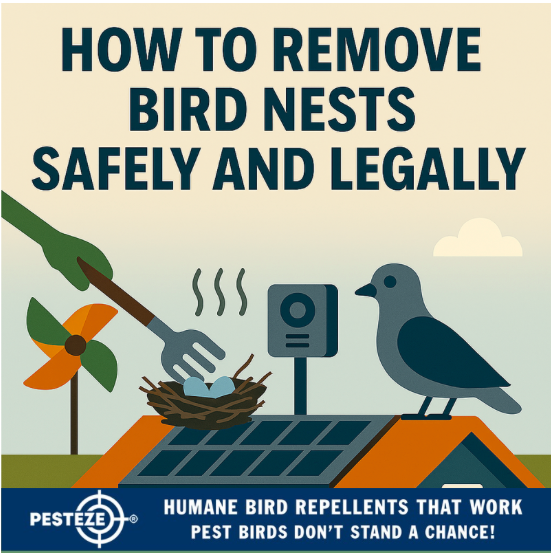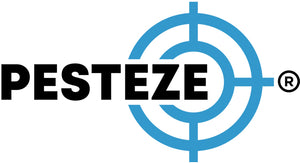HOW TO REMOVE BIRD NESTS SAFELY AND LEGALLY

HOW TO REMOVE BIRD NESTS SAFELY AND LEGALLY
SUMMARY
Bird nest removal requires strict adherence to wildlife protection laws and safety protocols to avoid legal penalties and ecological harm. This comprehensive guide provides step-by-step procedures for legal nest removal while protecting both human safety and wildlife welfare during the process.
FEATURES
- Legal Compliance: Federal and state wildlife protection laws governing nest removal timing and methods.
- Safety Protocols: Personal protection equipment and procedures for safe nest handling and disposal.
- Species Identification: Recognizing protected species and understanding specific legal restrictions.
- Timing Guidelines: When nest removal is legally permitted and ecologically appropriate.
- Sanitization Procedures: Proper cleaning and disinfection protocols after nest removal.
- Prevention Strategies: Post-removal deterrents to prevent re-nesting in the same locations.
GUIDE DESCRIPTION
Bird nest removal is heavily regulated by federal and state wildlife protection laws that can impose significant fines and criminal penalties for violations. The Migratory Bird Treaty Act protects most North American bird species, making it illegal to disturb active nests, eggs, or nestlings without proper permits. Understanding legal timing and procedures is essential before attempting any nest removal activity.
Legal timing restrictions vary by species and location, but generally nest removal is only permitted outside of breeding season when nests are inactive and abandoned. Spring and summer months typically represent peak nesting periods when removal is prohibited, while late fall and winter offer the safest legal windows for most species. Always check local regulations before proceeding with any nest removal.
Species identification is crucial for legal compliance, as some birds receive enhanced protection under additional federal and state laws. Raptors, waterbirds, and endangered species often have stricter regulations and longer protection periods than common songbirds. When in doubt, consult wildlife authorities or professional services rather than risk legal violations.
Safety preparation is essential before attempting nest removal. Wear protective clothing including gloves, long sleeves, and eye protection to prevent exposure to parasites, diseases, and sharp nesting materials. N95 or better respiratory protection helps prevent inhalation of dust, bacteria, and fungal spores commonly found in bird nests and droppings.
Removal procedures should prioritize both human safety and minimal ecological disruption. Photograph the nest location before removal for documentation purposes, then carefully remove nesting materials using tools rather than bare hands. Double-bag all nest materials in sealed containers to prevent spread of parasites or diseases during disposal.
Sanitization protocols are critical after nest removal to eliminate health hazards and attractant scents that might encourage re-nesting. Disinfect all surfaces with appropriate antimicrobial solutions, paying special attention to areas contaminated with droppings or nesting debris. Proper disposal of contaminated materials may require special handling depending on local regulations.
Health precautions extend beyond the removal process itself. Histoplasmosis, salmonella, and various parasites can be transmitted through bird nest materials, making thorough decontamination essential. Seek medical attention if you experience respiratory symptoms, fever, or other illness following nest removal activities.
Documentation requirements may apply in some jurisdictions, particularly for commercial properties or repeated removal situations. Maintain records of removal dates, locations, and species involved to demonstrate compliance with seasonal restrictions and legal requirements. Professional consultation is recommended for complex situations or protected species.
Prevention installation immediately following legal nest removal helps prevent re-establishment in the same locations. Install appropriate deterrents, physical barriers, or exclusion devices while nests are absent and before the next breeding season begins. Proactive prevention is more effective and legally simpler than repeated removal cycles.
Professional services should be considered for protected species, difficult access locations, or large-scale nest problems. Licensed wildlife control operators have proper permits, specialized equipment, and legal expertise to handle complex situations while ensuring full regulatory compliance.
Remember that nest removal without proper timing and procedures can result in federal fines up to $15,000 per violation plus potential criminal charges. When uncertain about legal requirements, always consult local wildlife authorities or professional services rather than risk serious legal consequences.
- Pukhraj Sharma


Comments 0